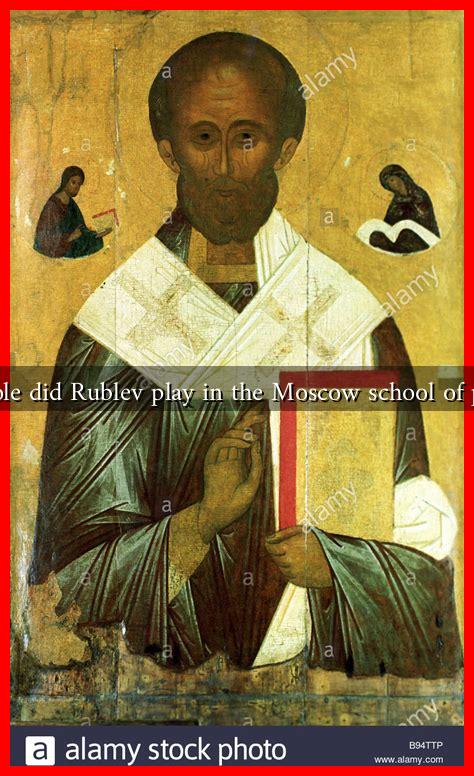-
Table of Contents
The Role of Andrei Rublev in the Moscow School of Painting
Andrei Rublev, a 15th-century Russian icon painter, is often regarded as one of the most significant figures in the history of Russian art. His contributions to the Moscow school of painting not only shaped the aesthetic and spiritual landscape of the time but also laid the groundwork for future generations of artists. This article explores Rublev’s role in the Moscow school of painting, examining his techniques, themes, and lasting influence.
Historical Context of the Moscow School of Painting
The Moscow school of painting emerged during a period of significant political and cultural transformation in Russia. The rise of Moscow as a political center in the late 14th and early 15th centuries coincided with the decline of the Byzantine Empire, which had previously influenced Russian art. As a result, Russian artists began to develop a unique style that blended Byzantine traditions with local elements.
- Political Changes: The consolidation of power in Moscow under Ivan III (Ivan the Great) fostered a sense of national identity.
- Cultural Shifts: The influx of Western ideas and the establishment of the Russian Orthodox Church as a dominant force influenced artistic expression.
- Artistic Developments: The need for religious icons and frescoes in churches led to a flourishing of the visual arts.
Rublev’s Artistic Techniques and Innovations
Rublev’s work is characterized by a distinctive style that emphasizes harmony, spirituality, and emotional depth.
. His techniques and innovations played a crucial role in defining the Moscow school of painting.
- Use of Color: Rublev employed a rich palette, utilizing color to convey emotion and spiritual significance. His use of gold leaf added a luminous quality to his icons.
- Composition: His compositions often featured a balanced arrangement of figures, creating a sense of unity and tranquility.
- Expressive Faces: Rublev’s figures are known for their expressive faces, which convey a range of emotions, inviting viewers to engage with the spiritual narrative.
Key Works and Their Significance
Rublev’s most famous work, the “Trinity” icon, exemplifies his mastery and the ideals of the Moscow school. Created around 1410, this icon depicts the three angels who visited Abraham and Sarah, symbolizing the Holy Trinity. The “Trinity” is celebrated for its:
- Spiritual Depth: The icon captures the essence of divine love and unity.
- Innovative Composition: The arrangement of the figures creates a sense of dialogue and connection.
- Emotional Resonance: The serene expressions of the angels evoke a sense of peace and contemplation.
Another significant work is the frescoes in the Cathedral of the Annunciation in the Moscow Kremlin, which showcase Rublev’s ability to blend narrative and decorative elements seamlessly.
Rublev’s Legacy and Influence
Rublev’s impact on the Moscow school of painting extends far beyond his lifetime. His approach to iconography and religious art influenced subsequent generations of artists, including:
- Feofan Grek: A contemporary who adopted Rublev’s techniques while adding his own stylistic elements.
- Simon Ushakov: A 17th-century artist who drew inspiration from Rublev’s emotive style.
- Modern Artists: Contemporary Russian artists continue to reference Rublev’s work, highlighting his enduring relevance.
Rublev’s legacy is also preserved in various institutions, including the Andrei Rublev Museum in Moscow, which houses many of his works and promotes the study of his contributions to Russian art.
Conclusion
Andrei Rublev’s role in the Moscow school of painting is pivotal in understanding the evolution of Russian art. His innovative techniques, profound spirituality, and emotional depth set a standard that influenced countless artists and shaped the visual culture of Russia. As we reflect on Rublev’s contributions, it becomes clear that his work transcends time, continuing to inspire and resonate with audiences today. For those interested in exploring Rublev’s art further, resources such as the [Andrei Rublev Museum](http://www.rublevmuseum.ru) provide valuable insights into his life and legacy.





